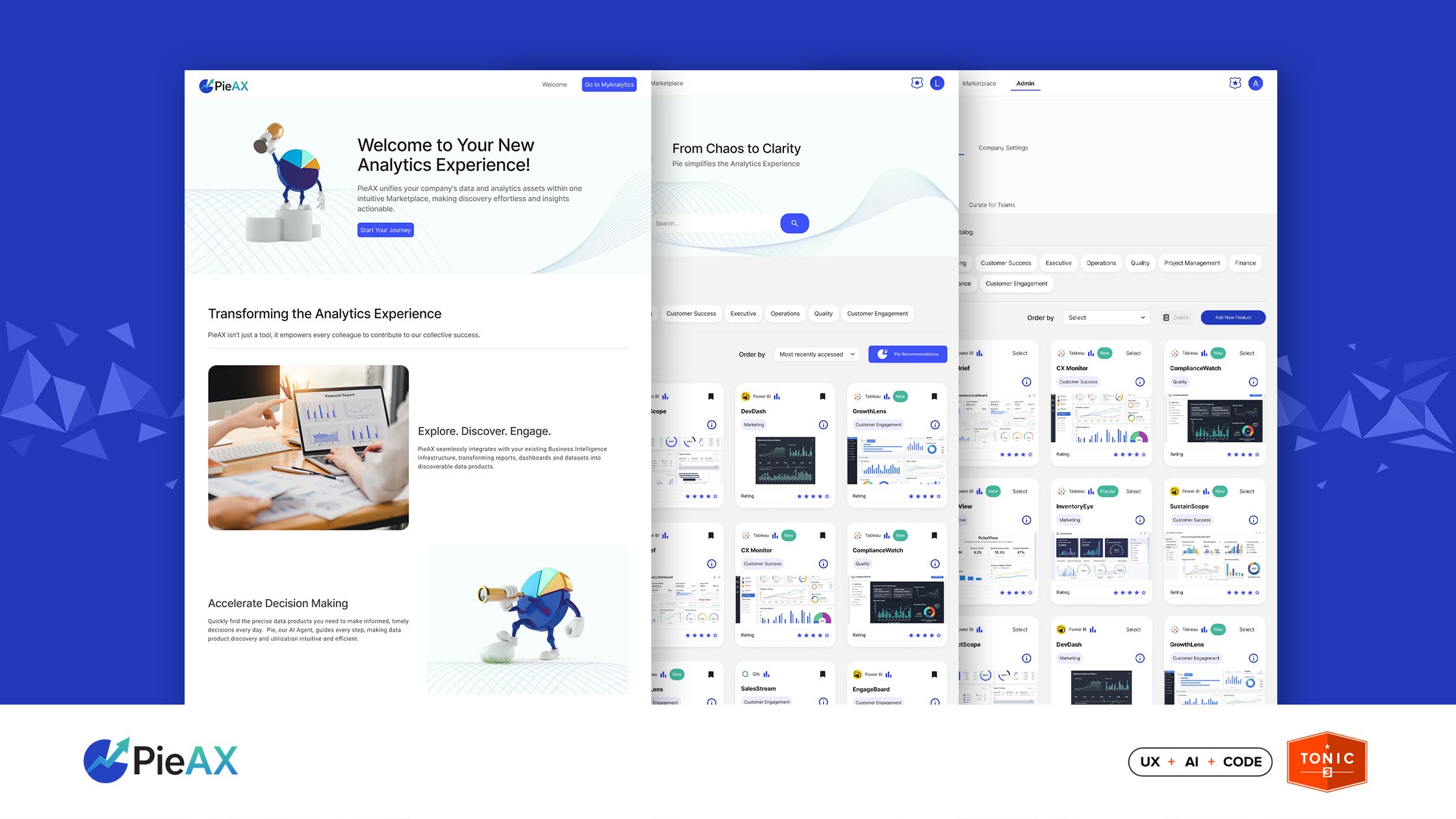From Vision to Validation: How Tonic3 Built an Investor-Ready AI Prototype in 10 Weeks for Startup PieAX

PieAX, an ambitious AI startup, was poised to revolutionize highly regulated industries with its platform for auditable and explainable insights. But before committing to a costly, lengthy build-out, the founder needed to prove the concept. The stakes were high: they needed to validate their complex product vision and create a tangible artifact to secure the next round of investment.
The challenge wasn't just building an app; it was building trust in an environment where accuracy and transparency are non-negotiable.
The Challenge: Validating a Complex AI Vision
As an early-stage company targeting regulated industries, PieAX faced a two-pronged problem:
-
Product Risk: How could they ensure their innovative ideas would meet the stringent demands of compliance-focused analysts without wasting time and resources on features that wouldn't stick?
-
Investment Readiness: They needed a powerful, demo-ready asset that could clearly communicate the product's value and user experience to new investors.
To de-risk the product and accelerate their timeline, PieAX partnered with us (TONIC), bringing our expertise in simplifying complex engineering experiences.

The Solution: Human-Centered Design for Explainable AI
We deployed a rapid, relentlessly human-centered strategy focused on validation, clarity, and speed. Our work spanned both product design and brand reinforcement to build credibility:
1. Validating the Product with Future Users
We didn't just listen to the founder; we engaged directly with the target audience. Through intensive user testing and feature-prioritization workshops with compliance analysts, we stress-tested every assumption. This rigorous process ensured the final product direction was validated and aligned with the non-negotiable real-world needs of the enterprise buyer.
PieAX Founder: "First, they are relentlessly Human-Centered. They didn't just listen to me, the founder. They went straight to our future users—the compliance-focused analysts."
2. Designing for Trust and Explainable AI
Building for AI requires designing for clarity, transparency, and auditability. We translated PieAX’s complex data flows into a high-fidelity, 50+ screen interactive prototype. This artifact was not merely aesthetically pleasing; it was strategically designed to make the AI's logic understandable and auditable—critical for securing trust in regulated environments.
3. Defining a Cohesive Brand System
We addressed early branding challenges where inconsistent visual language undermined trust. Through competitive positioning and stakeholder workshops, we defined a complete, professional brand system—including logo, color, typography, and tone-of-voice—creating a cohesive brand presence that matched the sophistication of the technology.
The Impact: Demo-Ready in 10 Weeks
The most critical impact was speed and certainty. Instead of committing to a long, expensive "code-and-pray" development cycle, we delivered a validated, investor-ready asset in just 10 weeks.
This rapid prototyping achievement provided two vital business outcomes:
-
Product Certainty: The product vision was fully validated with essential user input, guaranteeing the startup built the right features from day one.
-
Investor Confidence: The comprehensive, interactive prototype gave PieAX a tangible, persuasive artifact that was immediately used in investor pitches, demonstrating maturity and de-risking the investment.
PieAX Founder: "Finally, they embody 'Build it right the first time.' Instead of us spending a year in a 'code-and-pray' cycle, delivered this demo-ready prototype in just 10 weeks."
Rapid, validated prototyping didn't just design the product; it powered the next phase of the company's growth by turning a complex vision into a trusted, fundable reality.
Need to de-risk your AI product vision or prepare for a critical funding round? High-fidelity, human-centered prototyping is the fastest path launching with confidence.
Schedule a Design Workshop
Frequently asked questions when defining an early-stage product vision

.jpg?width=50&height=50&name=1632885917795%20(1).jpg)